
Steamboat Photos, Page 15
U.S. Greenbrier
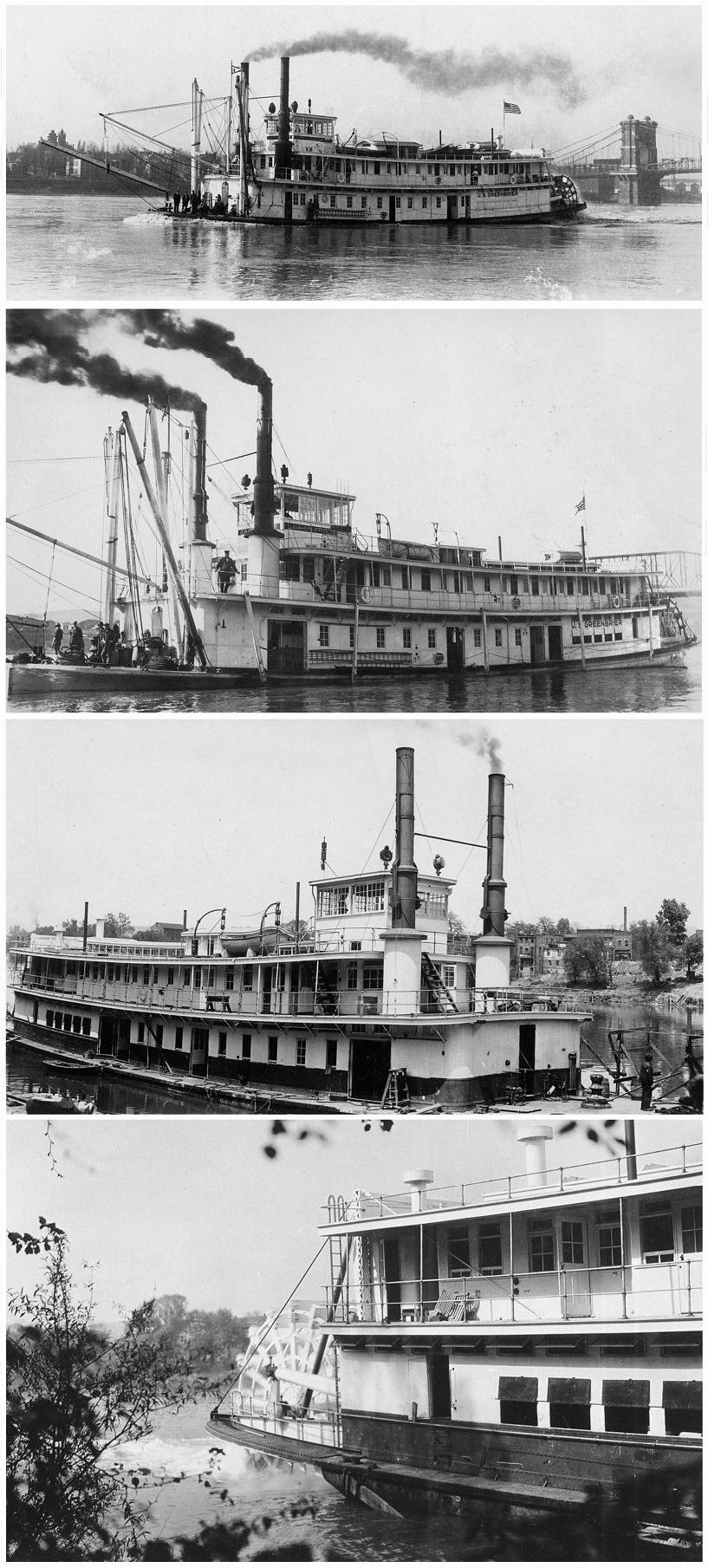
Four of the U.S. GREENBRIER, lighthouse tender that came in a cache of steamboat photos taken by a chap who traveled the rivers, working on boilers in boat yards and repairing boilers when a boat was stranded somewhere and couldn't move under her own steam until she was fixed up.
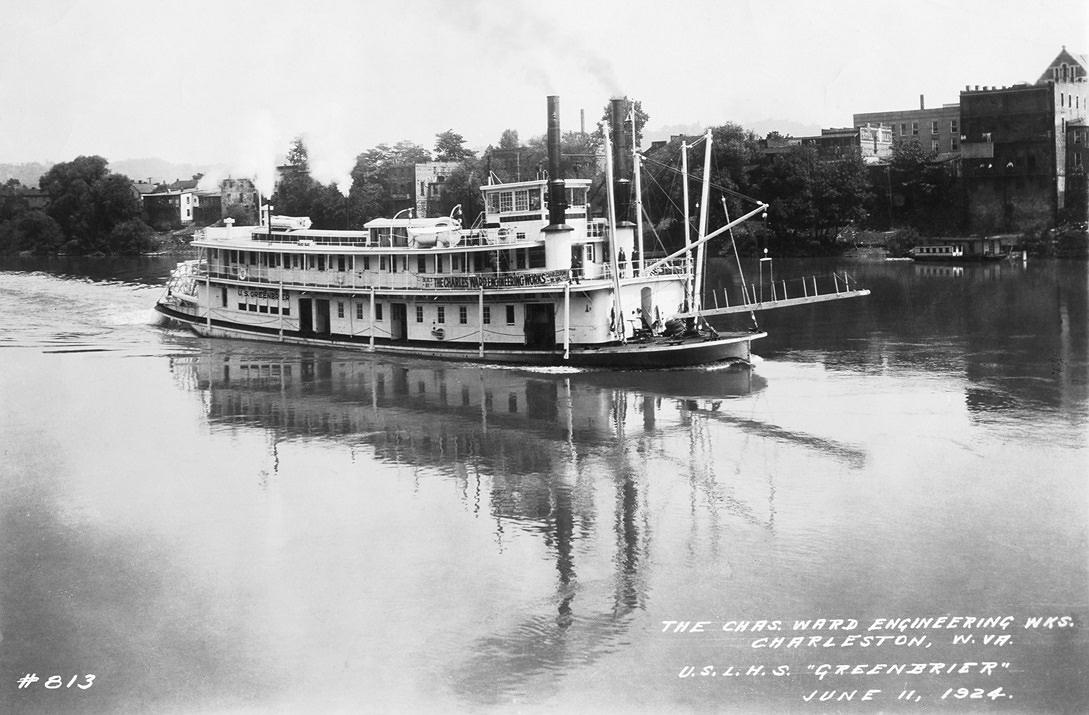
The U.S.L.H.S. GREENBRIER at Charleston, West Virginia in 1924
Steamboat GREENBRIER celebrated in a special 8 x 10 print taken 11 June 1924, evidently to celebrate the maiden voyage of the boat built by the Charles Ward Engineering Works of Charleston, West Virginia. Charleston is the city on the shore of the Kanawha River in the background of this photo. The boat was photogenic and was often captured by shutterbugs along the Ohio. A nice looking boat with lots of character. The initials U.S.L.H.S. stood for United States Light House Ship. (actually Light House Tender)
GREENBRIER
Sternwheel Lighthouse tender
Built Charleston, West Virginia by Charles Ward Engineering Works, 1924
Assigned to the U.S. Lighthouse Service (1925-1939)
Transferred to the U. S. Coast Guard (July 1, 1939-September 1, 1947)
Last owned by H. Lee and H. E. Rosher; Charles G. Smith Company (March 1948)
OFFICERS:
Captain Leslie Hill (Master, 1924 - Spring 1938)
Captain Arthur J. Schletker (Master, 1938)
Ran on the Ohio, Tennessee and Kanawha rivers
Fred Way's Steam Packet Directory Number 2444:
GREENBRIER tended the government lights on the Ohio River and tributaries. In 1929 when there was a celebration of the Ohio River locks and dams she carried U. S. President Herbert Hoover from Cincinnati to Louisville. In 1939 she became a U. S. Coast Guard boat and in World War II she had an anti-aircraft gun mounted on the roof. She ended her career as a landing boat on the Intracoastal Canal.
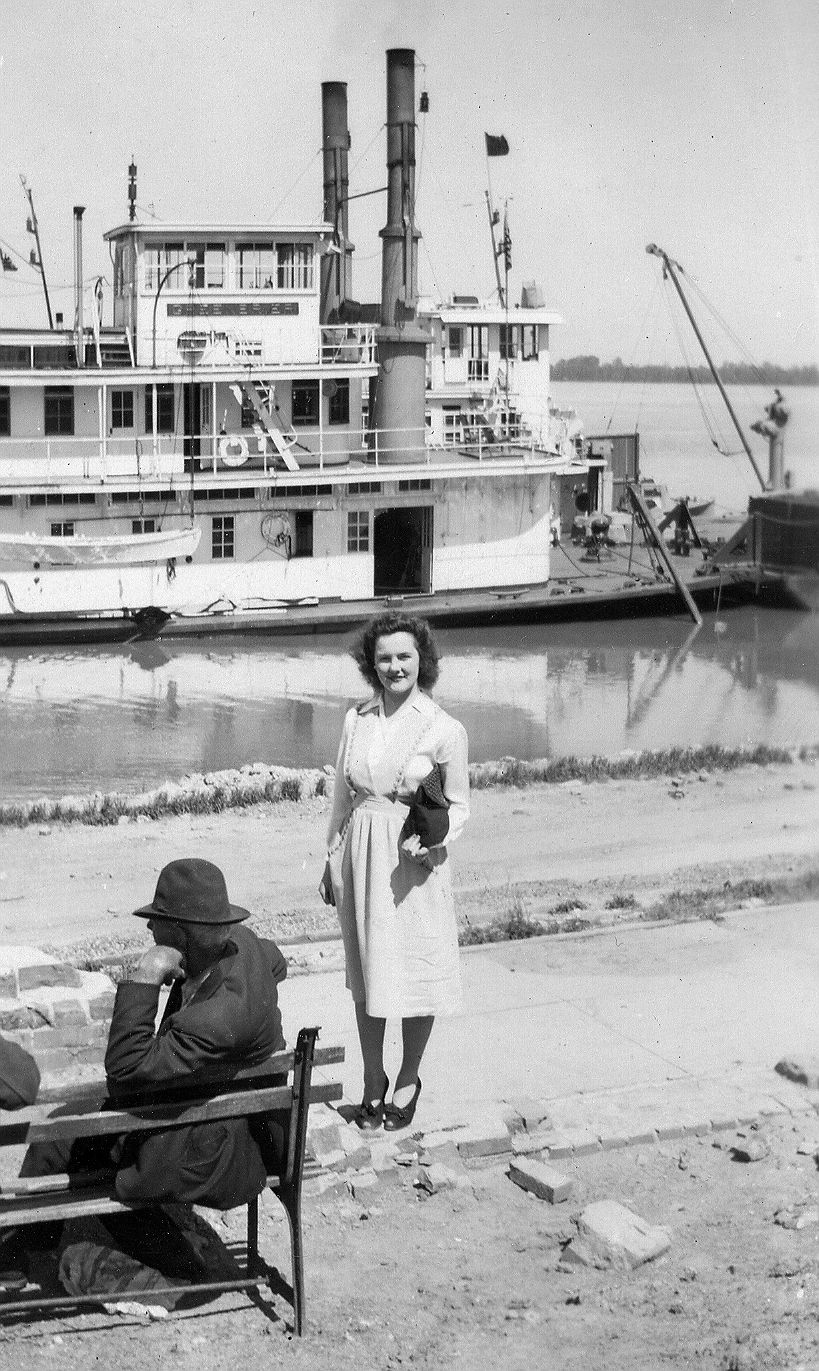
Dated 1943 of young lady standing near a seated old gent with the lighthouse tender GREENBRIER behind them.
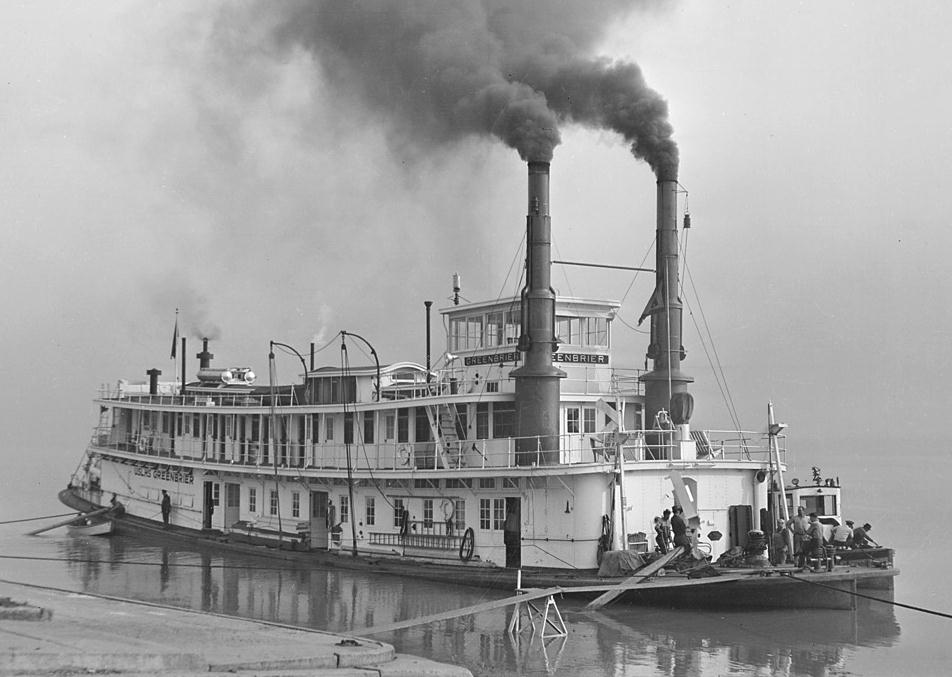
Greenbrier large tow boat
Paducah, Kentucky 1938
Tennessee Valley Authority, Information Office.
National Archives & Records Administration.
Southeast Region (Atlanta) (NRCA)
5780 Jonesboro Road
Morrow, GA, 30260
Cataloged under the ARC Identifier (National Archives Identifier) 280831
Kodak Negative File, compiled 1933 - 1976 ARC identifier: 279689
commons.wikimedia.org
On the back the 8 x 10 is rubber stamped Nov '29 so this must have been when President Hoover (possibly the gent in the white hat on the main deck, far right) was aboard the boat from Cincinnati to Louisville to celebrate Ohio River locks and dams (see Fred Way's comment below).
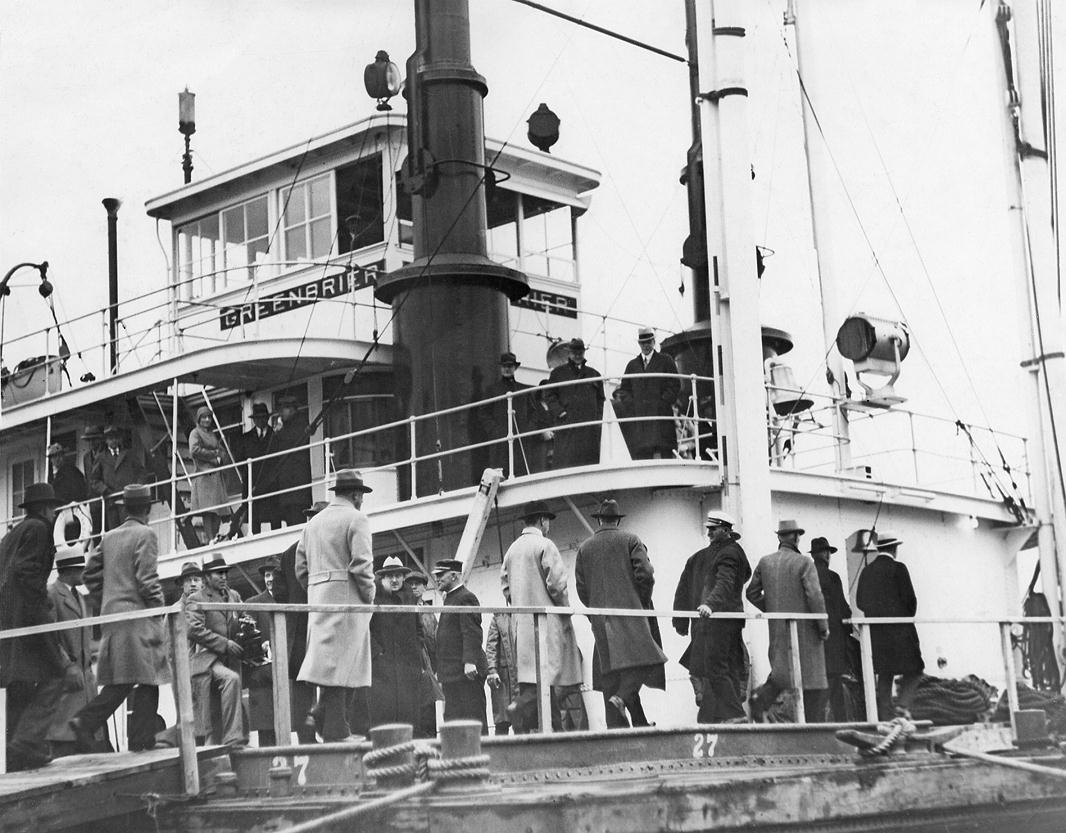
GREENBRIER (Lighthouse tender, 1925-?)
Sternwheel Lighthouse tender
Built Charleston, West Virginia by Charles Ward Engineering Works, 1924
Assigned to the U.S. Lighthouse Service (1925-1939)
Transferred to the U. S. Coast Guard (July 1, 1939-September 1, 1947)
Last owned by H. Lee and H. E. Rosher; Charles G. Smith Company (March 1948)
OFFICERS:
Captain Leslie Hill (Master, 1924 - Spring 1938)
Captain Arthur J. Schletker (Master, 1938)
Ran on the Ohio, Tennessee and Kanawha rivers
Fred Way's Steam Packet Directory Number 2444:
GREENBRIER tended the government lights on the Ohio River and tributaries. In 1929 when there was a celebration of the Ohio River locks and dams she carried U. S. President Herbert Hoover from Cincinnati to Louisville. In 1939 she became a U. S. Coast Guard boat and in World War II she had an anti-aircraft gun mounted on the roof. She ended her career as a landing boat on the Intracoastal Canal.
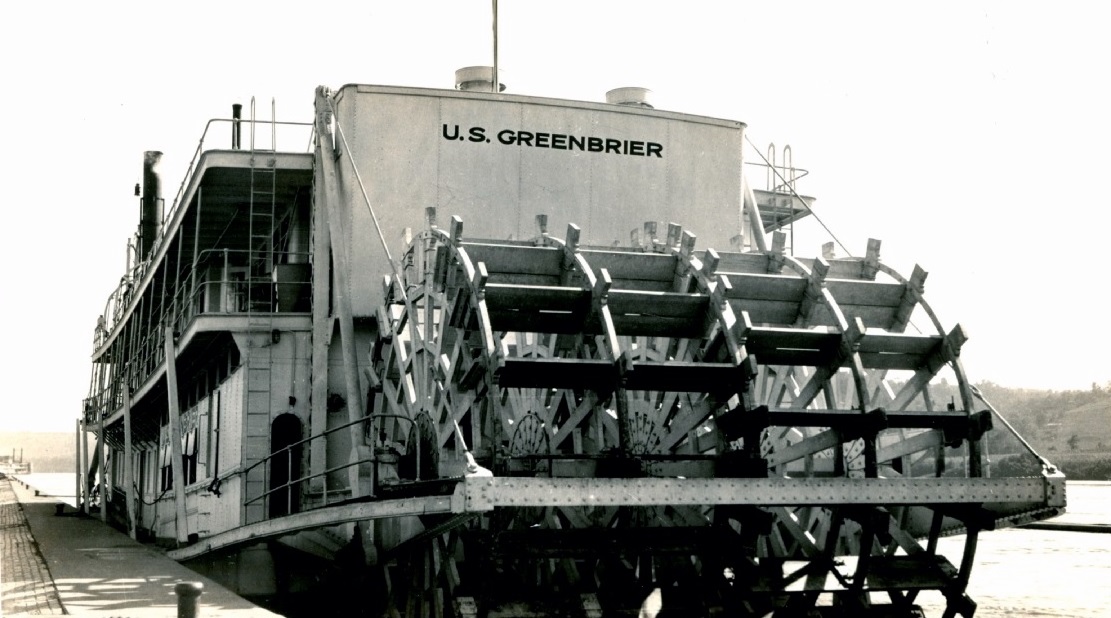
GREENBRIER stern view
Other Steamboats
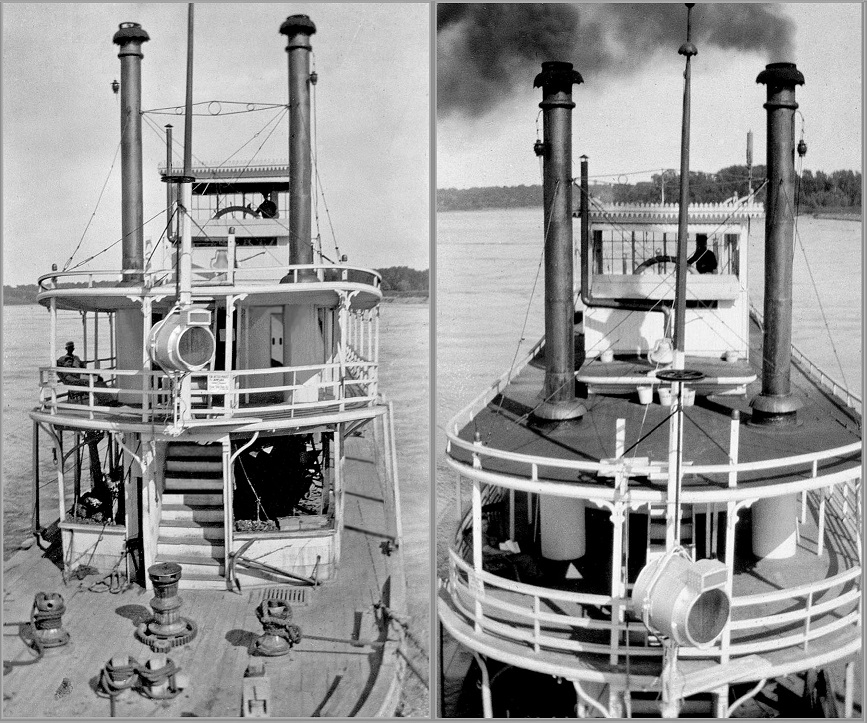
Two of my favorite photos from the Murphy Library site.
They were identified as the ED HECKMANN but that's probably not the case, Ed Heckmann may have taken the photos.
Ed's brothers John and William "Steamboat Bill" Heckmann had boats named after him, but as far as I can tell the other brothers Ed, Fred and Lewis apparently did not.
Only a few letters on the pilot house are vaguely visible and they don't suggest to me that Heckmann was part of the name. The Missouri River was where the Heckmanns ran their boats. They lived in charming Hermann, MO on the Missouri that I've visited quite a few times.
Great photos, gives an almost "you are there" 3D when you look at them. Ideal for a model maker to work from with so many details in the unusual angles the photos were taken from.
The boat may have been pushing a show boat or a "quarter boat" on a barge where the person with the camera could have been standing.
The photo on the left had a big cable running diagonally across it from upper left to lower right and it took me a long time to "erase" it in photo shop and fill in the details that were concealed by the cable.
I visited Ed Heckmann's daughter Dorothy at her home in Hermann during the 90s, she wrote 3 memoirs available on amazon.com about her steamboatin' family and her experiences as a girl on the JOHN HECKMANN.
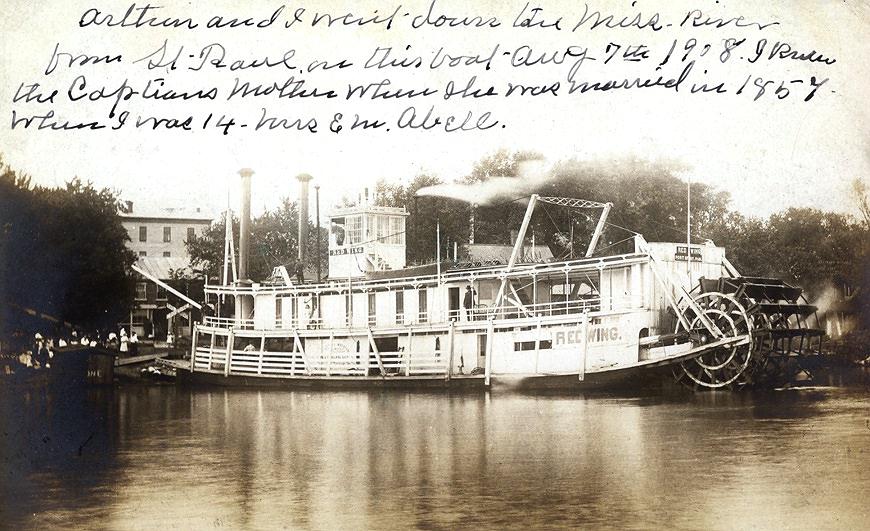
"Arthur and I went down the Miss(issippi) River from St. Paul on this boat-Aug 7th 1908. I knew the Captain's Mother when she was married in 1854 when I was 14. - Mrs E.M. Abell."
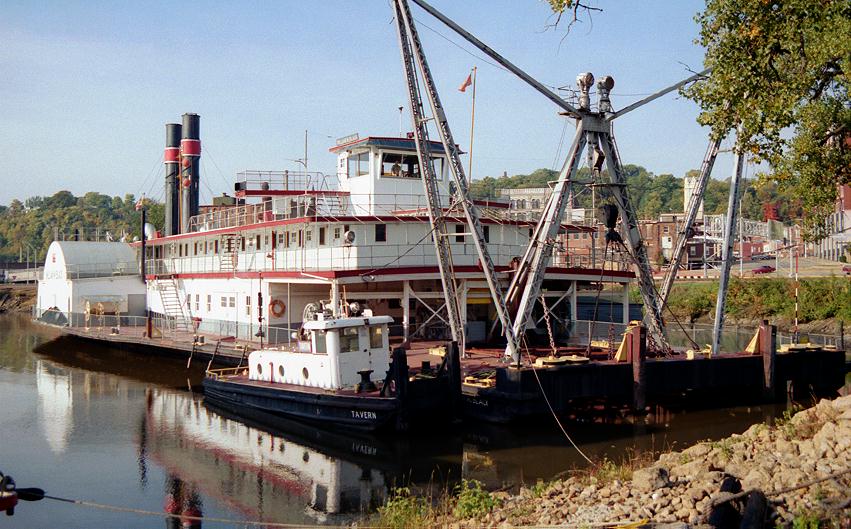
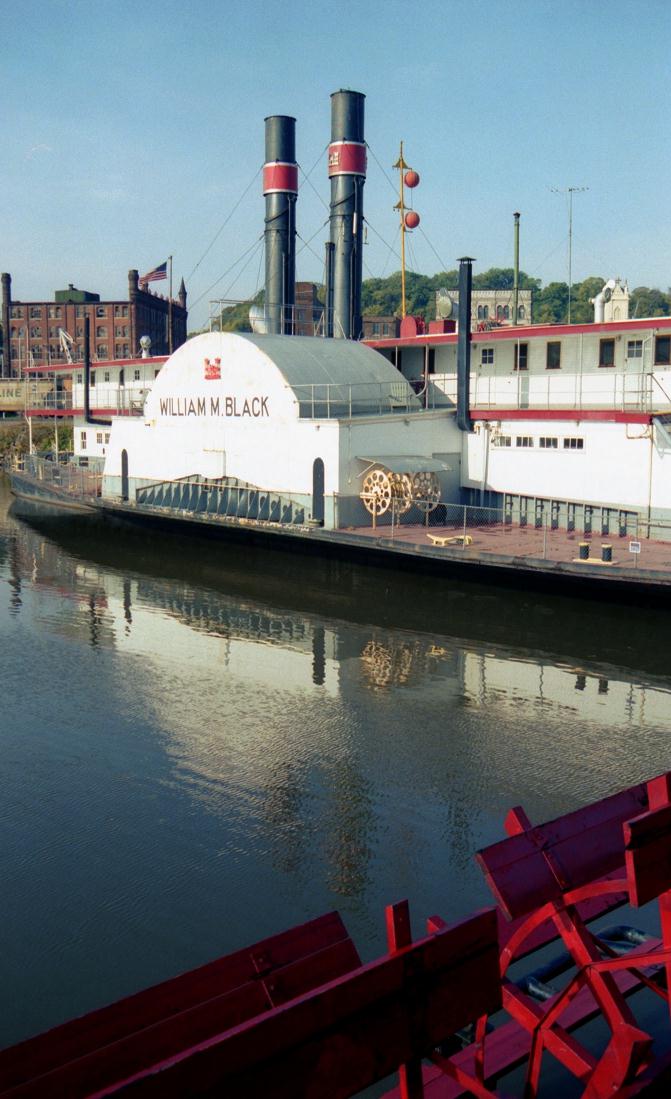
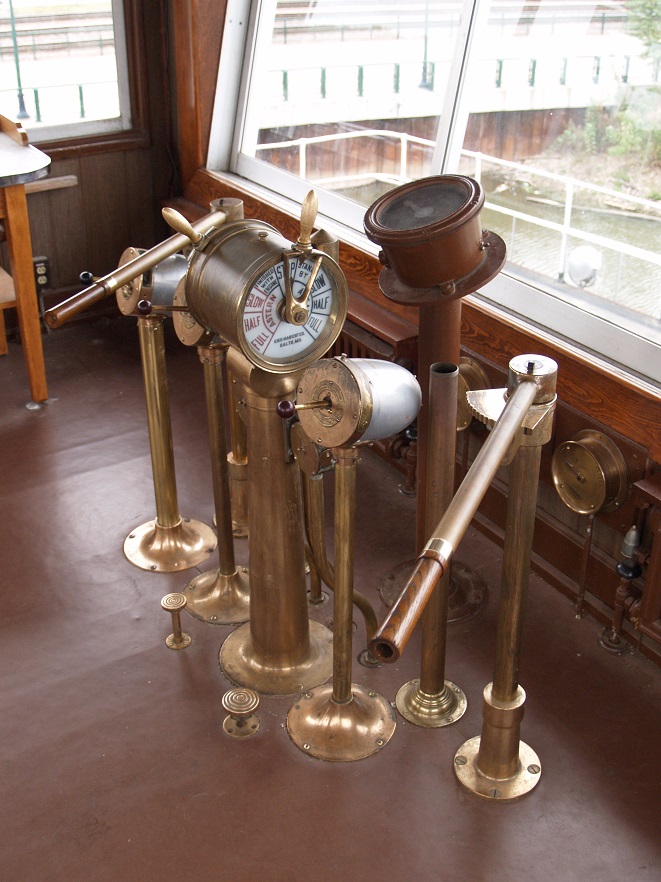
Three of the photos I took of the historic 1934 Dredge WM. M. BLACK at Dubuque, Iowa. It's an impressive and large steamboat, that shares some characteristics with the sidewheel passenger boats of ye olden days.
The location of the stacks lined up behind each other between the paddlewheels is distinctive to at least one other Corps of Engineers dredge, the WM. S. MITCHELL which looked like a "sister ship" to the BLACK. Illustrators of foreign editions of Mark Twain's books sometimes copy this configuration rather than depicting the stacks to the port and starboard sides of the deck ahead of the pilot house.
The boat's history abridged below from City of Dubuque site.
William M. Black
cityofdubuque.org
The dredge William M. Black, moored in the Ice Harbor, is one of the last steamboats built with the advance technology of the 1930s, the last era before diesel power replaced steam. A side-wheeler steamboat, the Black is similar in form and style to the great steam boats of the 19th century and thus constitutes a link with the most colorful period of river transportation.
This vessel, which is 277 feet long and 85 feet wide, was built in 1934 by the Marietta Manufacturing Company in Point Pleasant, West Virginia for the U.S. Army Corps of Engineers.
The Black's metal hull and main deck have superstructures of the same material while the upper deck and pilot house are constructed entirely of wood. The main deck contains a machine shop, two boilers feature two large metal smokestacks bearing Corps of Engineers insignia, two paddle wheel areas, and the dredge pump engine.
The paddle wheels are 25 feet in diameter, weigh 32 tons each, and are powered by 600 horsepower reciprocating steam engines. The dredge pump has a 1,300 horsepower triple expansion steam engine.
There are several living quarters for the crew, storerooms, a drying room, a food preparation area and separate crew and officer's mess, and fourteen staterooms including captain's and engineer's quarters.
The dredge William M. Black is an important link in the chain of work performed by the U.S. Army Corps of Engineers on the Mississippi, Missouri, and other western rivers.
The Black was one of the last steam powered vessels used by the Corps of Engineers in its vital river work and thus constitutes a final chapter in the history of a colorful era in river traffic.
The Corps utilized this boat from 1934 to 1973 and used it to open navigation channels, excavate pilot channels and boat harbors, and to pump earth fills.
Burning up to 7,000 gallons of oil daily, the Black was capable of dredging 80,000 cubic yards of material per day.
When operating at full capacity, this steamboat carried a crew of 49 but had sleeping accommodations for up to 63 persons.
Location: Ice Harbor: National Mississippi River Museum & Aquarium
Year Constructed: 1934
Builder: Marietta Manufacturing Company, Point Pleasant, West Virginia
Style: Side-Wheel Dredge
Date listed on National Register of Historic Places:April 12, 1982
Date listed as a National Historic Landmark: April 27, 1992
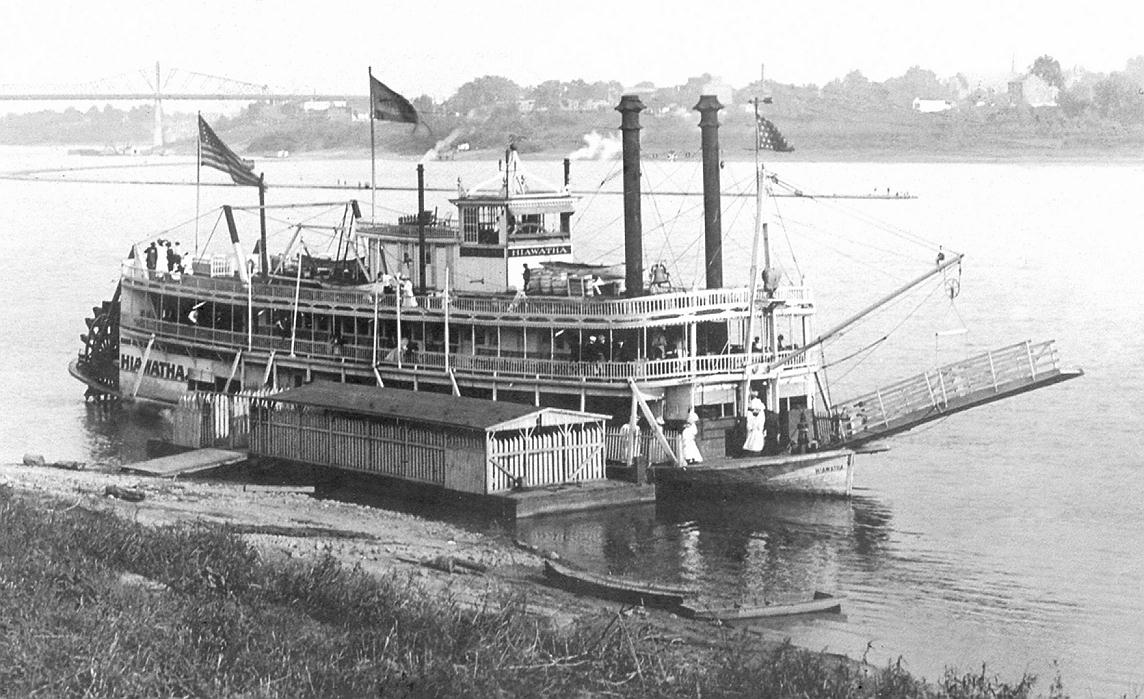
HIAWATHA (from a real photo post card taken at New Albany, Indiana on the Ohio River).
Sternwheel Excursion Steamer
Way's Packet Directory Number 2626
Built in Dubuque, Iowa as the W.J. YOUNG Jr. in 1882.
Converted into an excursion boat in 1906 and given the name HIAWATHA.
Run by the Kentucky & Indiana Bridge Co. and ran usually below the falls at Louisville, KY.
Burned at the foot of Broadway, Louisville on November 30, 1911.
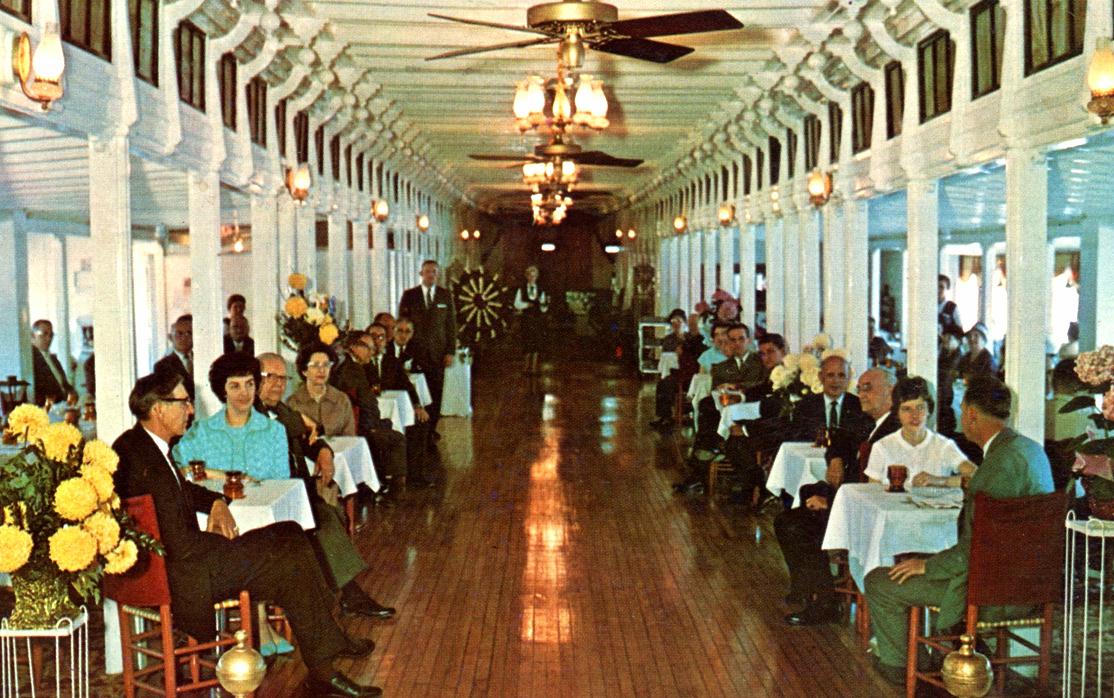
The River Queen, after it ended service as an overnight passenger vessel, became a static tourist attraction with a restaurant and bar. This color postcard shows the restaurant-bar area.
The postcard was postmarked 1963 from Hannibal, MO where the RIVER QUEEN was moored on the north side of the Mark Twain Memorial Bridge on the Illinois shore opposite Hannibal. The color postcard is pretty corny compared to the black and white image which is relatively classy by comparison.

With the exception of images credited to public institutions,
everything on this page is from a private collection.
Please contact Steamboats.com for permission for commercial use.*
All captions provided by Dave Thomson, Steamboats.com primary contributor and historian.
